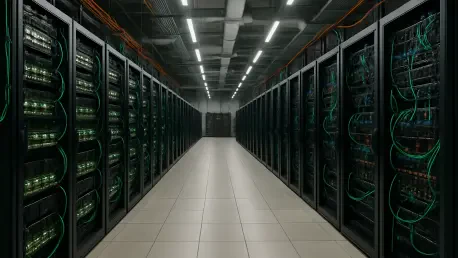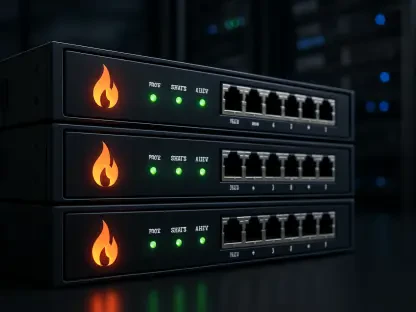In a transformative move for the tech landscape, two major players have joined forces to address the skyrocketing demand for artificial intelligence infrastructure with a staggering investment that promises to reshape the industry. Anthropic, a leading AI research company, has partnered with Fluidstack, a UK-based cloud provider, to commit $50 billion toward building state-of-the-art data centers across the United States. This ambitious initiative signals a pivotal shift in how AI companies approach the computational needs of advanced models, moving away from reliance on third-party cloud services to custom-built facilities. With initial projects planned for New York and Texas, and more locations on the horizon, this partnership not only highlights the urgency of scalable infrastructure but also positions both companies at the forefront of a competitive race. The implications of this investment extend beyond technology, promising significant economic benefits and setting a benchmark for innovation in the sector.
Driving AI Innovation Through Infrastructure
The primary motivation behind this colossal $50 billion investment lies in the pressing need to support the computational demands of next-generation AI systems. Anthropic, known for its Claude-based workloads, has historically leaned on cloud services from giants like Amazon Web Services and Google Cloud. However, the shift to custom data centers reflects a strategic decision to tailor infrastructure specifically for AI model training and deployment, optimizing performance and efficiency. This move is seen as essential for pushing the boundaries of scientific discovery and addressing complex global challenges through more capable AI technologies. As industry leaders note, the ability to control and customize infrastructure can significantly accelerate breakthroughs in machine learning, giving companies a distinct advantage in a field where speed and precision are paramount. The focus on dedicated facilities underscores a broader realization that generic cloud solutions may no longer suffice for the unique requirements of cutting-edge AI research.
Beyond the technological imperatives, this initiative is poised to make a substantial economic impact across the United States. Estimates suggest that the construction and operation of these data centers will create approximately 800 permanent jobs and 2,000 temporary construction roles, providing a significant boost to local economies in the chosen regions. This job creation aligns with a growing trend among tech giants, often referred to as hyperscalers, who are pouring billions into AI-driven expansions to meet market demands. The partnership between Anthropic and Fluidstack serves as a catalyst for regional development, particularly in areas like New York and Texas, where the first facilities will be established. Moreover, the ripple effects of such investments could inspire further innovation and attract additional tech enterprises to these hubs, fostering a cycle of growth and opportunity that extends well beyond the immediate scope of the project.
Navigating a Competitive and Challenging Landscape
In the broader context of the AI industry, this investment arrives amid an intense race among companies to secure independent and scalable infrastructure. Competitors, including those behind prominent AI platforms like ChatGPT, are reportedly allocating even larger sums—exceeding $1.4 trillion in some cases—through alliances with major tech firms such as Broadcom, Oracle, and Nvidia. This competitive dynamic underscores a critical industry consensus: the AI boom is driving unprecedented growth in the data center market, with projections estimating a value of $1 trillion by 2030, fueled by spending on IT and facility equipment. The scale of these investments highlights the urgent need for specialized infrastructure capable of handling the intensive computational loads of modern AI technologies. For Anthropic and Fluidstack, the decision to build dedicated facilities represents a bold step to carve out a leadership position in this rapidly evolving arena, where infrastructure often dictates innovation.
However, executing such massive projects is not without significant hurdles that could impact timelines and outcomes. Industry experts point to potential challenges such as interconnection delays, equipment shortages, and grid readiness as critical barriers that might slow progress. These logistical obstacles are compounded by the sheer scale of the infrastructure required to support AI workloads, which often demand cutting-edge hardware and robust energy solutions. The ability to navigate these issues efficiently could provide a competitive edge, distinguishing successful players from those bogged down by operational inefficiencies. For Anthropic and Fluidstack, overcoming these challenges will be crucial to maintaining momentum and delivering on the promise of their investment. Strategic planning and partnerships with local authorities and suppliers will likely play a pivotal role in ensuring that projects remain on track and meet the ambitious goals set forth.
Shaping the Future of AI Infrastructure
Reflecting on this landmark initiative, the collaboration between Anthropic and Fluidstack marks a defining moment in the AI industry’s evolution. Their commitment to a $50 billion investment in US data centers captures the essence of a sector at a critical juncture, where the demand for advanced computational power necessitates bold, independent action. This partnership not only addresses immediate technological needs but also lays the groundwork for economic growth through substantial job creation in key regions. Looking ahead, the success of these endeavors could inspire similar investments, further solidifying the link between robust infrastructure and AI innovation. As the market continues to expand, stakeholders must prioritize solutions to logistical challenges, ensuring that timelines are met through streamlined operations and strategic alliances. Ultimately, this initiative serves as a blueprint for how targeted investments can drive progress, offering a model for others to emulate in the quest to shape the future of technology.









